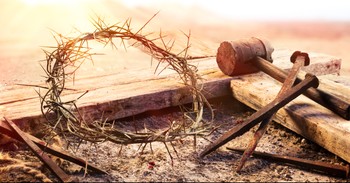
Sir Arthur Conan Doyle, the creator of the fictional detective, Sherlock Holmes, was not writing about a fictional event when he wrote about the Christmas Truce of 1914. In Europe, the nations of Britain and France with their allies were battling Germany. The fighting was savage. And yet at Christmas, all along the lines, something amazing happened. Doyle described it as "one human episode amid all the atrocities which have stained the memory of the war."
The war which both sides had thought would come to a speedy conclusion, instead bogged down into trench warfare when neither side was able to break through the other's defenses. By this day, Christmas, 1914, both sides were in a holding pattern, waiting for new troops and the coming year when a new offensive could begin. Life (and death) in the wet, muddy trenches was appalling.
In the evenings leading up to Christmas, men on both sides sang hymns. On Christmas Eve, they decked their trenches with Christmas symbols. In places, the Germans hung paper lanterns at the tops of their trenches. All along the front, groups of soldiers here and there met each other in no man's land, sometimes arranging to bury the dead who lay between the lines, sometimes exchanging Christmas songs and greetings. One observer wrote, "For an instant, the God of goodwill was once more master of this corner of the earth."
Christmas Day dawned with frost on the ground. For once there were no planes overhead, no rifle fire, no bombs along large stretches of the front. An unofficial truce was in effect, as the hostile nations with shared Christian roots extended a brief peace toward one another. "The silence seemed extraordinary after the usual din," wrote one Lieutenant.
In places along the line, officers and soldiers from both sides climbed out of their trenches, met the enemy between lines, shook hands and even exchanged Christmas gifts--mostly tobacco and food rations. Some shared addresses and photos and compared propaganda.
Of course, not everyone was friendly. In places along the line, especially where fighting had been particularly deadly in recent days, the men took shots at one another all day long. Here and there along the line, where truces were agreed upon, one side or the other broke the truce. Men on both sides were killed in this foul play, but it was rare. As one soldier wrote, "...why kill one another on such a festival day?" Or as Private William Tapp wrote in his diary, "...it doesn't seem right to be killing each other at Xmas time."
Generally more cordial relations prevailed. Near Frelingheim, the Germans rolled over a barrel of beer and the English responded with plum puddings. Near Le Touquet, Germans and English played a game of football. The Germans won 3-2.
For days afterward, fighting was more subdued. In some places the informal truce lasted a day or two more. Many wished it could have become permanent, that "peace on earth, goodwill to men" was more than a one-day sentiment. As a German put it, "it was a day of peace in war; it is only a pity that it was not decisive peace." Hundreds of thousands of casualties followed before the armistice of 1918.
Bibliography:
- Brown, Malcolm and Seaton, Shirley. Christmas Truce. New York: Hippocrene, 1984.
- Duffy, Michael. "The Christmas Truce." http://www.firstworldwar.com/features/christmastruce.htm
- Morgan, Tom. "The Christmas Truce, 1914." http://www.fylde.demon.co.uk/xmas.htm
Last updated July, 2007


